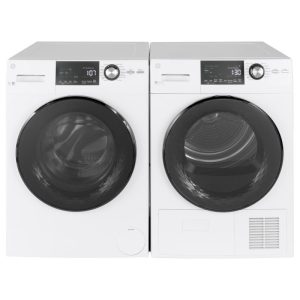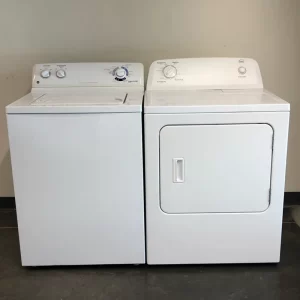Why Your Washing Machine Isn’t Spinning: Common Causes
Common Reasons for a Non-Spinning Washer
Why is my washing machine not spinning? When facing a washing machine that won’t spin, several issues could be at play. Understandably, this can cause frustration and confusion, but before calling for professional help, consider some common problems that might be causing your washer’s malfunction.
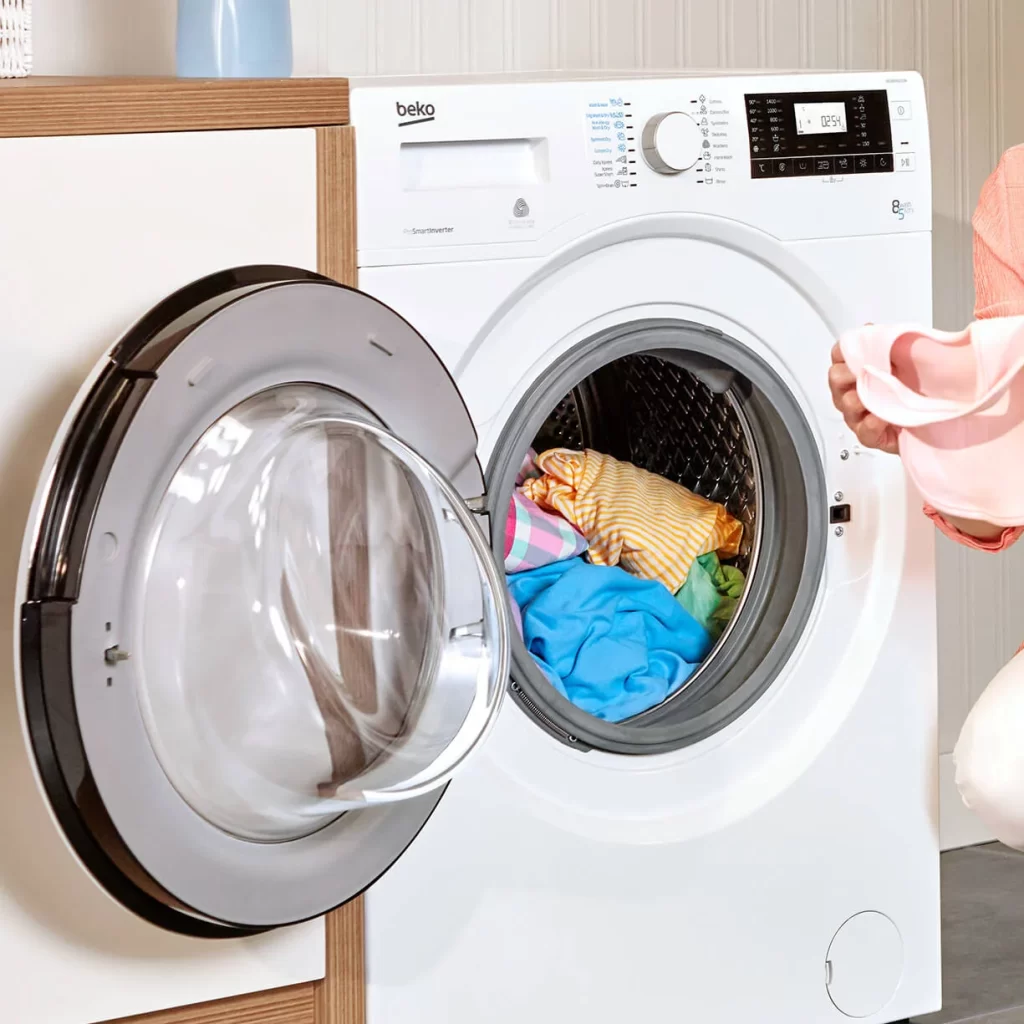
Firstly, blockages in the drainage system are frequent culprits. Objects like coins or hairpins can obstruct the water flow, preventing the washer from spinning. Regularly check and clean filters to avoid this type of issue.
Overloading the washer can also prevent the spin cycle from engaging. Ensure you’re not filling the drum too much and balance your loads. This not only prevents spinning issues but also helps your machine run more efficiently.
Power supply problems can be another factor. Make sure your washer is plugged in properly and the circuit breaker hasn’t tripped. A washer needs ample power to run its cycles, so always use a direct outlet instead of an extension cord.
One less common but possible reason is damaged drive belts. If the belt that turns the drum is worn out or snapped, the washer won’t spin. While this may require a professional to fix, knowing the potential issue helps in explaining the problem when calling for help.
Lastly, the washer being uneven can cause spin issues. If the machine is not level on the ground, it can lead to an unbalanced drum which disrupts the spinning. Use a spirit level to check and adjust your washer’s feet accordingly.
If you’ve checked these common issues and your washer still doesn’t work, it might be time to contact a repair technician who can diagnose and fix more complex problems. Always ensure they are qualified and trustworthy before allowing them to handle your appliance.
Addressing Overloaded Washers and Load Balance
One of the primary reasons a washing machine may fail to spin relates to overloading. Filling the washer too much can throw the machine off balance, preventing it from spinning properly. Here’s what you should do to address this issue:
- Check the load size: Make sure you’re not trying to wash too much at once. The machine has a set capacity for a reason.
- Evenly distribute clothing: When loading the washer, spread out your items evenly around the drum.
- Load balance and cycle setting: For heavy items, use a cycle designed for bulkier laundry and consider adding smaller items to balance the load.
Additionally, load balance is crucial for the smooth operation of your washing machine. An unbalanced load can cause the machine to ‘walk’, make loud noises, or simply not spin at all. To manage this:
- Rearrange your laundry: If the washer is thumping or shaking, stop the cycle and rearrange your items more evenly.
- Balance the washer: Check that your machine is level using a spirit level. Adjust its legs if needed for even grounding.
By understanding and correcting issues with overloading and load balance, you’ll likely address the common problem of a washing machine that won’t spin. Not only does this help the spin cycle, but it also prolongs the life of your washer. If these tips don’t solve the problem, there may be other issues at play, which you might need professional help to fix.
Identifying and Fixing Power Issues
If your washer doesn’t spin, the power supply might be the issue. First, check the plug to ensure it’s securely in the outlet. Loose connections can cause power interruptions. Next, inspect the circuit breaker for any tripped switches that need resetting. Also, avoid using an extension cord as it may not provide adequate power and could lead to malfunctions.
Here are some quick fixes for power-related problems:
- Ensure the washer is plugged directly into a wall socket.
- If your washer stops mid-cycle, reset the breaker that corresponds to your laundry area.
- Always check for a secure connection at the outlet; a loose plug won’t supply steady power.
- Test other appliances in the same outlet to confirm it’s functioning properly.
Remember, if you’ve addressed these power issues and your washing machine still isn’t spinning, more complex problems might be present. If the power supply solutions don’t fix the spin issue, it might be time to delve into more technical troubleshooting or consider seeking help from a professional.
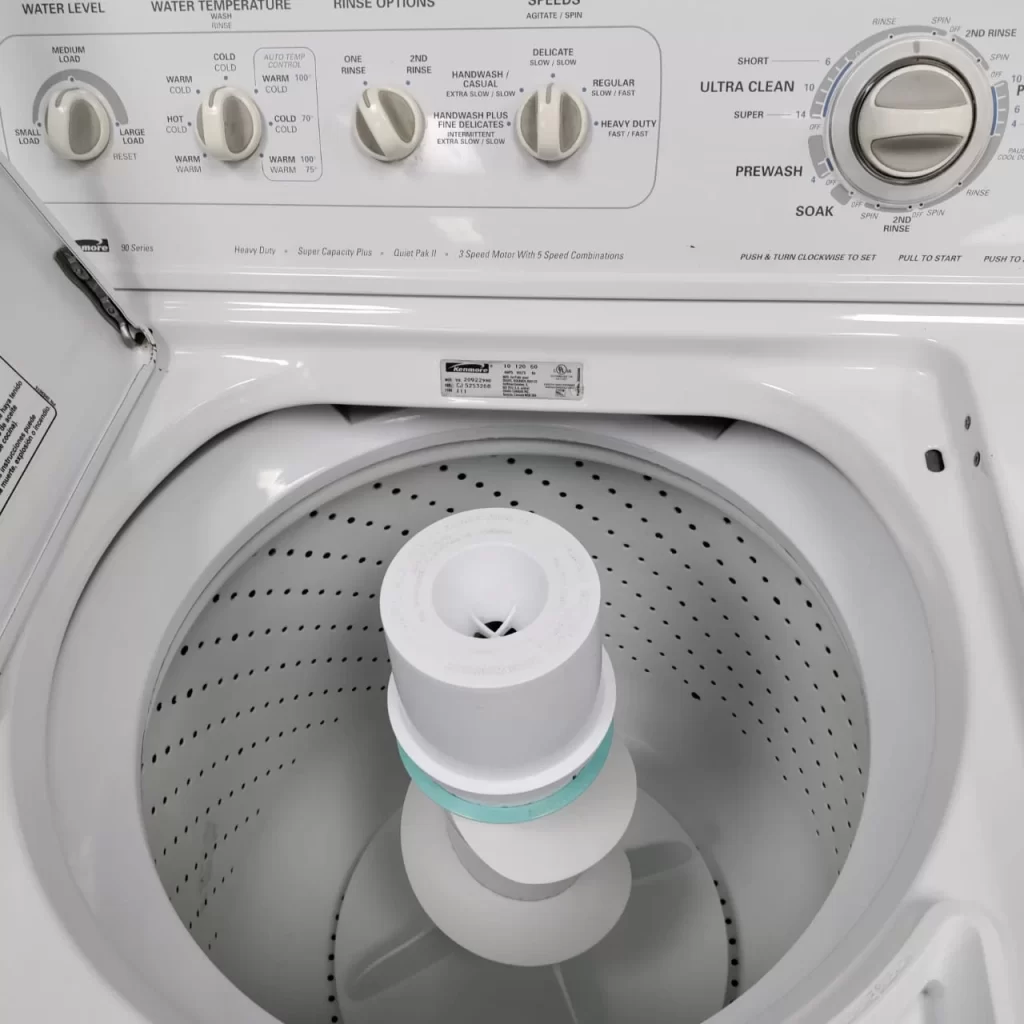 Recognizing Signs of a Washing Machine Malfunction
Recognizing Signs of a Washing Machine Malfunction
Recognizing the signs of a malfunctioning washing machine is key to addressing issues quickly. When your washer isn’t spinning, observe these signs to pinpoint the problem:
- Wet, heavy clothes: If clothes are too wet post-wash, it could indicate a spin cycle failure.
- Silent spin phases: A lack of noise during the spin cycle suggests the drum isn’t moving.
- Unclean heavier loads: Large or heavy laundry loads that remain dirty signal a spin issue.
- Mildew smell: A damp or musty odor can emerge from clothes left wet for too long.
These signs help identify that your washing machine may be struggling to spin correctly. If you notice any of these symptoms, act promptly to avoid more damage or inconvenience. Balance the load, check for power supply issues, or clear any blockages first. If these steps don’t resolve the issue, seeking professional assistance may be necessary.
Tips for Troubleshooting Drive Belt Problems
If your washing machine is full of water but won’t spin, the drive belt may be the issue. This belt connects the motor to the drum, allowing it to spin. Here’s how to troubleshoot drive belt problems:
- Inspect the belt: First, unplug your washer and open the back panel. Look for the drive belt. It may be loose or broken.
- Test the belt tension: Press on the belt with moderate force. It should have a little give, but not too much. If it’s too loose or has come off the pulleys, it might be the cause of your problem.
- Look for wear and tear: Over time, drive belts can become worn or damaged. Check for obvious signs of damage like cracks or fraying.
- Replace if needed: If the belt is damaged, it will need replacing. Get a belt designed for your washer model.
- Check the pulleys: While you’re there, look at the pulleys. They should turn smoothly and not wobble.
Remember, working on your washing machine can be dangerous. Only do so if you feel confident. Otherwise, call a professional for help.
Handling Drainage System Blockages
When your washing machine stops spinning, a blocked drainage system might be the issue. Here are steps to handle drain blockages effectively:
- Check the drain hose: Ensure it’s not kinked or clogged, disrupting water flow. Straighten or clear it out.
- Inspect the pump filter: Locate and clean your washer’s pump filter, often found at the front lower panel. Remove any debris.
- Use a drain snake: For stubborn clogs, a drain snake can help clear the hose. Exercise caution when using.
- Watch for small items: Small objects like coins or buttons can block the drain. Check pockets before washing.
- Test the pump: After clearing blockages, run a cycle to ensure water drains properly. Listen for unusual sounds.
If these steps do not clear the blockage, or if the washer still won’t spin, more serious issues may be present. You may need to seek professional help, especially if you are unsure about handling components like the pump.
Dealing with Damaged or Faulty Components
Identifying and resolving issues with damaged or faulty components is vital. Start with these common fixes:
- Inspect the spin switch: For top-load machines, check if the lid’s spin switch is stuck or bent. Push down the switch with a finger during a spin cycle to test.
- Examine motor couplings: Unplug the washer and check the coupling between the motor and transmission. Replace it if it’s broken.
- Assess the clutch assembly: On some washers, a worn clutch can prevent spinning. Consult your manual and inspect for wear.
- Look for electronic malfunctions: Control boards and timers can fail. If you see error codes or irregular functions, these components may be at fault.
- Check the water level sensor: A faulty sensor may misjudge the drum’s water level, disrupting spin cycles.
- Bearings and seals inspection: Noisy or stiff drum movements can indicate worn bearings or seals. These often require professional replacement.
If you’re uncertain about fixing these washer components, or the problem persists, it’s time to call an expert. They have the tools and expertise to diagnose and repair more complex issues safely.
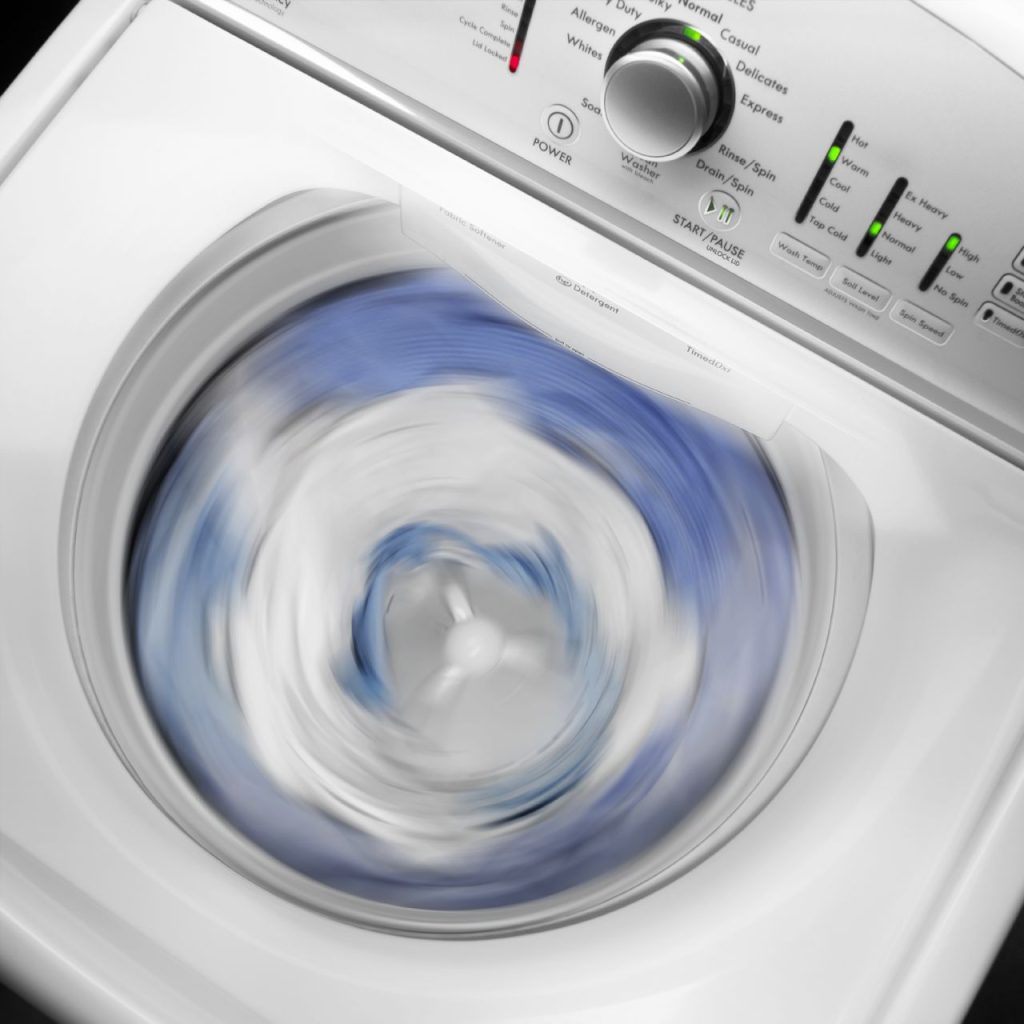 When to Call a Professional for Washer Repair
When to Call a Professional for Washer Repair
When your washing machine is not spinning, and you’ve tried all the troubleshooting steps with no success, it’s time to call a professional. Here are situations where expert assistance is needed:
- Persistent issues: If problems persist after addressing blockages, power supply, and load balance, seek professional help.
- Drive belt complexities: Replacing a drive belt involves disassembling parts of the washer. A technician has the right tools.
- Electronic errors: A repair technician can properly diagnose and fix control board and timer faults.
- Specialty components: For internal issues like motor couplings or clutch assemblies, experts are required.
- Safety concerns: If you’re not comfortable or equipped to handle repairs, it’s safer to use a professional.
Professionals have the training and experience to safely and effectively repair your appliance. They ensure your washing machine operates smoothly and often provide a warranty for their work. Remember, timely intervention can save you from costlier repairs down the line. If you’re unsure about any step or the problem seems intricate, don’t hesitate to contact a trusted washer repair service.
